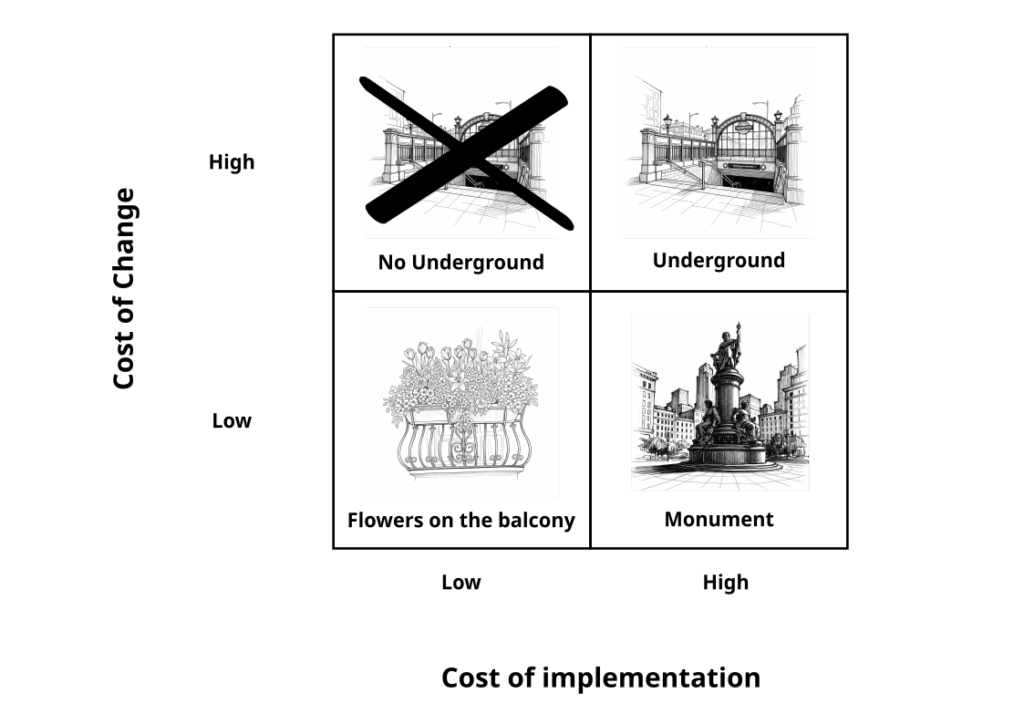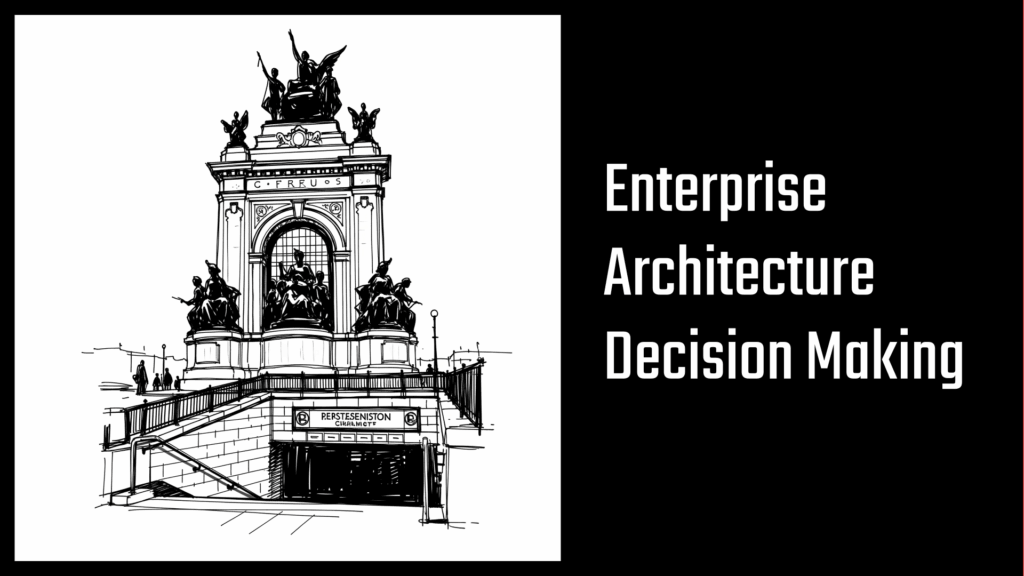In architecture we are on a daily basis helping our colleagues to make important decisions and sometimes we have to decide things ourselves.
For all these decisions there is one very obvious question – which is what is it going to cost to implement the decision. The cost could be measured in money, development hours or simply the effort that the architecture team has to put into it in order to get an approval.
There is however a second dimension – which is quite often overlooked or ignored: What does it take to change the decision if it turns out to be wrong or the strategy, the environment or the leadership team change and decide to go in a different direction.
I like to work with the city planning analogy and categorize decisions into the following four categories:
- Monuments are extremely expensive to build – especially when they are made from metal and from a well-known artist. However taking down even the biggest monument only takes a few determined revolutionaries at basically no cost – as one can witness in most revolutions.
- Flowers on the balcony are also easy to change and usually not that expensive in the first place.
- Underground systems are extremely expensive to build in the first place and changing the route network once the city has been growing is prohibitively expensive
- No Underground: Not building an underground system is the least expensive thing you can do – it’s even cheaper than the flowers on the balcony. Changing your mind after the city has been growing for centuries will cost a fortune.
The four archetypes are shown in the 2×2 matrix below:

The danger on “No Underground” decisions
For architecture the “No Underground” type of decisions are the most dangerous ones:
- Most likely our ecommerce system will never act as a market place
- We should only focus on B2C customers in the first place
- We can implement a proper integration architecture after the POC phase
Especially business stakeholders quite often do not really understand the incremental cost of integrating a functionality touching all capabilities at a distant point in the future. It is critical that we as architects create full transparency about the implications and the incremental cost of postponing a decision.
In my experience business often requests flexibility to take a decision further down the road. As for the underground analogy it can be helpful to detail the cost implications of the two options:
- We do not want an underground system but would like to be prepared for it. Drilling already all the tunnels (or in the IT case creating already the entire infrastructure for a non-used market place offering) is going to be expensive but will yield the requested flexibility
- Not preparing for a future market place offering and operating the system for several years that way will result in a 3-5 times higher implementation cost at a future point in time.
These discussions can be painful but it is important that we destroy the idea that one could have the pie and eat it too.
Underground vs. Monument
If you would ask business stakeholders to attend either a discussion about the monument or the underground system the majority would join the monument as it sound – well monumental. The same is often true for architecture discussions. People are focused on the ones that leave a visual impression or are closely linked to everyday work.
If a company should hand out iPads to the top executive team is such a “Monument” decision everyone is quite interested to participate in. Deciding on the right integration architecture or cloud platform is not nearly as sexy and interesting.
Architecture has to communicate the connection between the “Underground” topic – such as the integration architecture – and the value it brings to the customer by faster innovation or lower latency. Jeff Besoz calls the decisions that are hard to revert “one way door decisions”. Creating a corporate culture of being very aware of these one way doors is extremely important.
Practically speaking the effort that should go into the investigation of a “Underground” decision with the same investment value should be much higher compared to a Monument with the same face value. The Monument only requires a one off investment but the Underground might cause a massive refactoring need in the future.
Empower people to choose their flowers
The only section we have not covered are the low effort and low cost of change decisions. We won’t waste too much time here and you should do the same in your daily prioritization. We are far too often focused on small things because they are “right”. There is a corporate policy against using Python for Scripting and so we fight epic battles over a small script.
Just make sure that the script stays small and does not grow into a monument and leave it to the people that think they need it for their job. If a decision can be reverted within 2-3 months and does not take any additional capacity except for the team anyhow working on it don’t bother.
